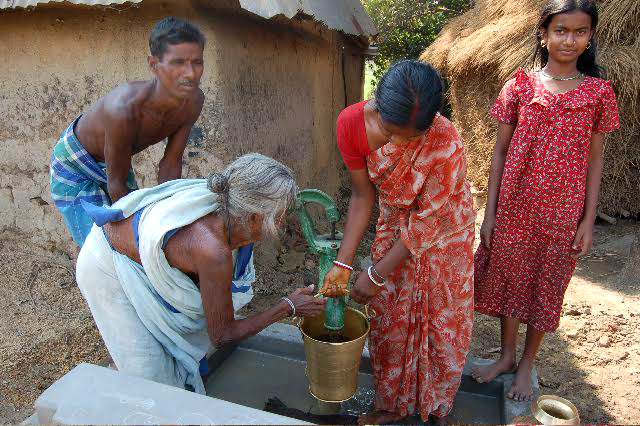Daily trek for water ends - extract from Peter's journal, January 2014
‘Down a track, set in a landscape of dusty sun-baked fields and overlooked by a small sadhu’s shack, we arrived at a towering bamboo tripod set over a hole in the ground from which a muddy flow of water was issuing. A man was perched at the top of the tripod and two others were stationed at the bottom, working in tandem to attach lengths of pipe to a shaft that descended into the ground, the shaft being connected to a pump that was drawing water from a deep pond nearby.
Drilling Begins
Making progress
‘The pump sent water down the pipe while the two men at ground level rotated the shaft with chain wrenches, its cutting blades working deep below the surface as the water sprayed out to moisten the soil, gradually letting the drill bore down to the clean water 200 feet down. It would take them about a week to get to the clean water, but once there a concrete platform would be built around the pipe, a hand pump attached at the top and bingo - a new well was up and running.’
Water flows!
Well in action
This story described a trip into the countryside from Joyrambati. Since then the depth of the water table in West Bengal has fallen to 300 feet, and in the coastal areas considerably lower. This presumably adds to the length of time to sink each well and to the number of pipe lengths required, accounting for the increase in cost from around 35,000 rupees to around 60-70,000 rupees.
A woman fills her bucket from the new well provided in her village in her village.
All her life until now she has carried her water from a mile away





